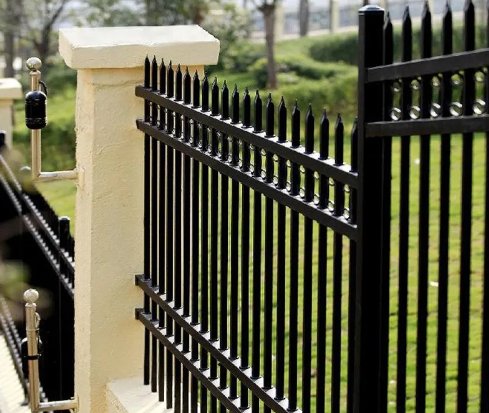
2024/11/18
Wrought iron fence classification
According to the use requirements, it is divided into fixed fences and movable fences.
Common specifications of wrought iron fences
40 series: columns 5X5, thickness 1.5; horizontal columns: 4X4, thickness 1.2; middle columns: 1.9X1.9, thickness 1.0 [mm].
32 series: columns 5X5, thickness 1.5; horizontal columns: 3.2X3.2, thickness 1.2; middle columns: 1.6X1.6, thickness 1.0 [mm].

Art is priceless. The design cycle, material selection, processing difficulty, working hours and other costs of iron art are not the value and price of iron art in the general sense. We still advocate and encourage Chinese iron art artists to develop more iron art works with heirloom and collection value.
The collection value of iron art lies in its iron art culture. Its cultural connotation is enduring, with strong transmission and value preservation, and has irreplaceable value of other art materials, which can stand the test of time. With its own metal material texture and the special quality of deformation technology, it determines its thickness, simplicity, masculinity and femininity, rich in classical luxury and affinity, which makes people feel happy and gentle. Its dark steel luster, soft arc curve, simple lines, or deliberate vicissitudes of rust have attracted more and more people's favor.
Iron art has many advantages. What is appreciated is the original vicissitudes of nature and natural beauty of iron art, and its artificial hand-forged hammer marks, rather than industrial machine marks. Iron ore can only be less and less. The more primitive and traditional it is, the more valuable it is.
Industrialized production cannot completely replace hand-made products. Only hand-made iron products have vitality, because some complex shapes and humanized and personalized works cannot be made by machines. An industrial mold can produce hundreds or thousands of products, but each hand-made iron work can only be a unique piece, and there are no two in the world. Humans can use machines to make iron art and assist designers in completing personalized works, but they cannot do without handwork. Iron art requires design, and the master of production can give full play to the design and enter into re-creation. Therefore, the "gold content" of an iron work, in addition to the basic length of time, material, and thickness, mainly depends on its design aesthetic content and the amount of condensation of hand-made wisdom, whether it is a commodity or a work of art.